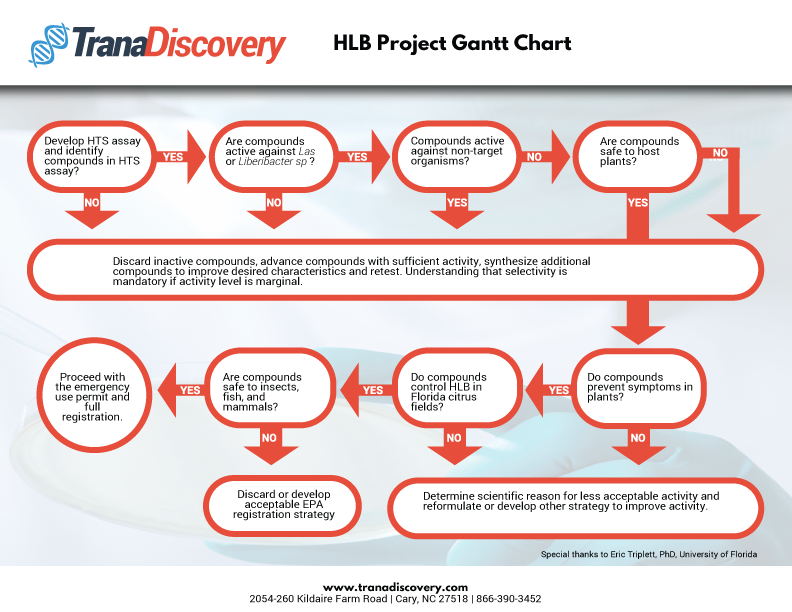OUR APPLICATIONS
HUMAN APPLICATIONS
Trana Discovery provides a proprietary drug discovery technology platform that enables its partners to discover new treatments of bacterial, viral, and fungal infectious diseases. Our assays screen compounds to identify potential drug candidates that work through a novel mechanism of action: inhibition of the target pathogen(s) ability to use an organism-specific transfer RNA (tRNA), essential for propagation.
NOVEL TECHNOLOGY
Scientists at Trana Discovery have long understood the crucial role of transfer RNA (tRNA). Trana Discovery technology exploits this conserved region of tRNA. As infectious organisms are selected as targets, a unique probe, based on a pre-determined sequence, is developed to mimic the chemical structures of the ASL. The probe is then employed in a high-throughput screening process to identify compounds that react with high affinity and inextricably bind to the ASL, indicating discovery of a molecule that possesses tRNA inhibitory activity specific to the target pathogen. By inhibiting the role of tRNA, propagation cannot proceed, thus stopping pathogen growth and spread of infection. Because each pathogen has a unique combination of tRNAs, compounds with highly selective anti-infective characteristics will target only the pathogen and in turn avoid disruption of normal flora, resistance issues, or superinfections.
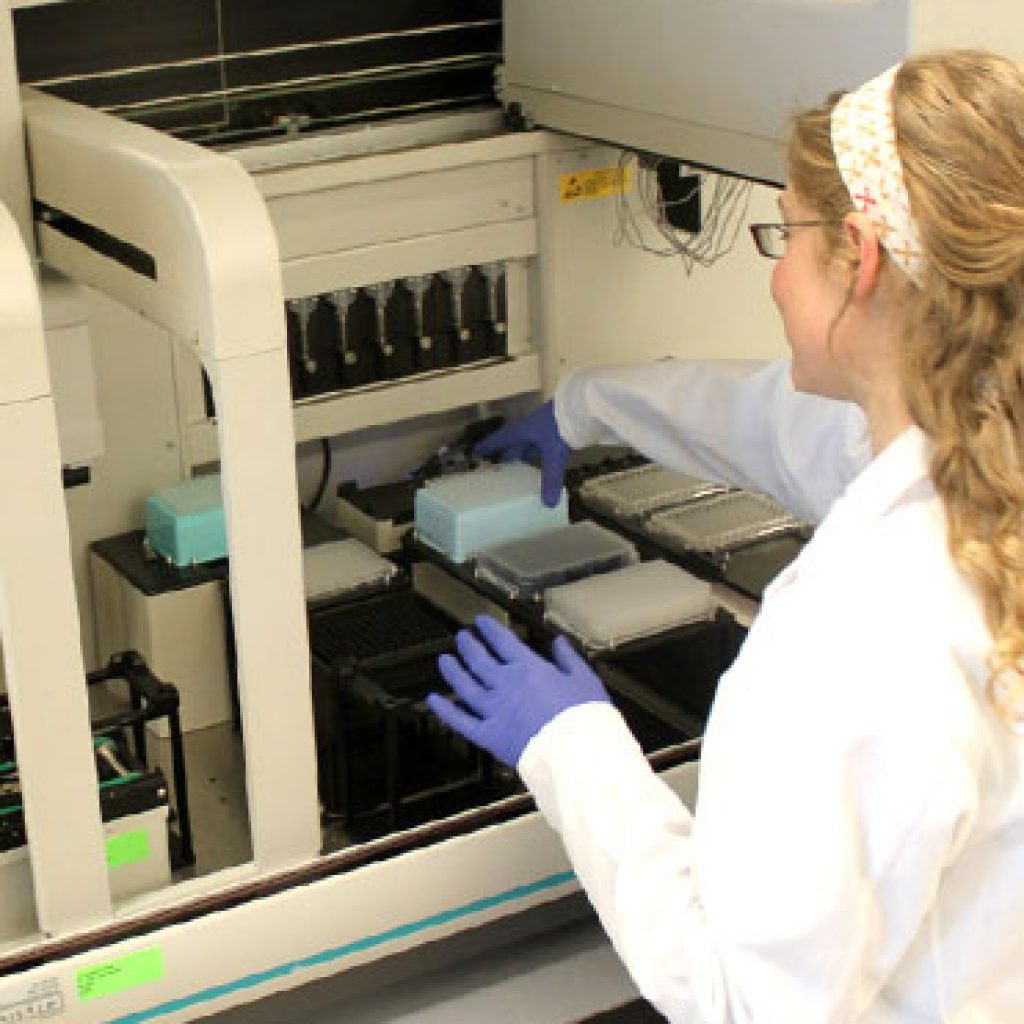
The Role of tRNA
All organisms need tRNA for normal propagation. Inhibition of tRNA during RNA replication or blocking its recruitment during assembly should stop the replicative cycle, and the pathogen would not be able to survive.
Founders of Trana Discovery helped characterize the structure of tRNA, particularly of the ultra-conserved region, the anti-codon stem loop (ASL), of this complex protein. If chemicals that bind to the ASL region could be identified, thereby inhibiting the action of tRNA, new drugs could be crafted for use in treating human and animal diseases.
Read our Paper
The Discovery and Characterization of Novel Bioactive Small Molecules Targeting the Priming Complex of HIV-1.
Download it here.
Staphylococcus aureus 201 HTS Assay
The Trana Staphylococcus aureus 201 High-Throughput (HTS Assay identifies compounds that inhibit the essential use of a S. aureus unique tRNAArg that is required for protein synthesis. The assay identifies compounds that interfere with the interaction of an oligonucleotide mimic of the ASL loop of tRNAArg with a programmed ribosome.The validated assay was used to screen a 60,000 compound library from which 283 compounds were initially identified. These compounds were retested in a dose response curve and 89 compounds were confirmed as biochemically active.
Thirty-eight of these compounds were selected based on an acceptable IC50 concentration and tested in a bacterial assay where eight compounds demonstrated activity against two or more strains of S. aureus. Strains tested included MRSA strains, vancomycin resistant strains and MDR strains. The two most active hits were further characterized to establish a true antibiotic effect.
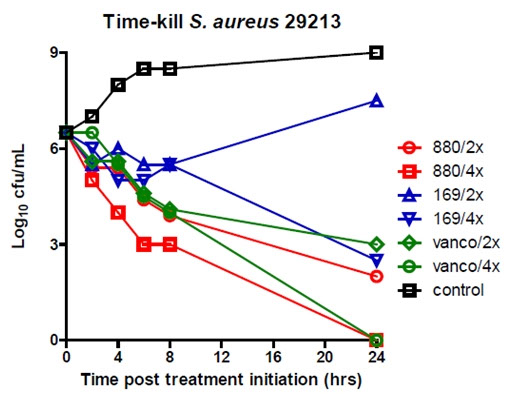
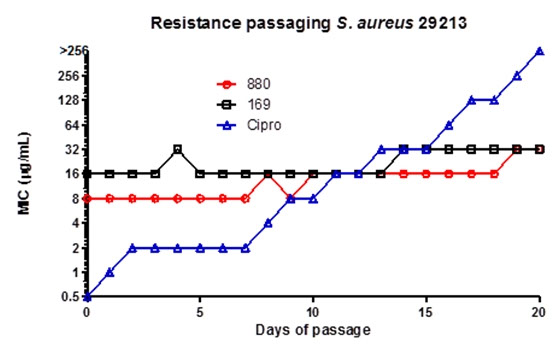
Further experiments with all eight bioactive hits demonstrated that six of the eight inhibited polypeptide synthesis directly.
The assay is now fully HTS functional and is immediately available for licensing to the pharmaceutical industry for the discovery, development, and market availability of critically needed new anti-infectives.
HIV 201 HTS Assay
The Trana HIV 201 High-Throughput (HTS) Assay – designed to identify compounds that inhibit the use of tRNA by HIV – has the ability to select compounds with anti-HIV bioactivity. Because tRNA is essential for HIV replication, disruption of the virus’ ability to use tRNA would represent a novel target for anti-HIV drug therapy.
Scientists at Trana Discovery have developed the patented technology that forms the basis for the assay used to screen molecular libraries for tRNA inhibitors. The technology centers on the anticodon stem loop (ASL) of tRNA and the importance of nucleotide modifications within the ASL. The ability to synthesize copies or mimics of the ASL with the modifications, just as they occur in nature, is what overcomes previous barriers to high-throughput screening and enables further research and the application of Trana Discovery technology to methodically search for compounds that inhibit interactions with tRNA.
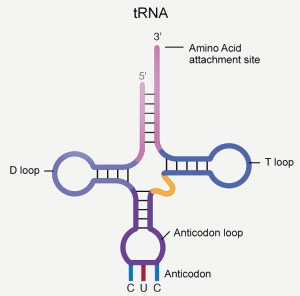
The Trana HIV 201 High-Throughput (HTS) Assay – designed to identify compounds that inhibit the use of tRNA by HIV – has the ability to select compounds with anti-HIV bioactivity. Because tRNA is essential for HIV replication, disruption of the virus’ ability to use tRNA would represent a novel target for anti-HIV drug therapy.

AGRICULTURAL APPLICATIONS
There is an issue for the world’s food supply. Multi-resistant microorganisms are now causing disease in Wheat rust, Asian Soybean rust, HLB disease in citrus crops and most recently the recurrence of resistant Panama disease in bananas. These all can have a major impact on the world’s food supply. Fungi and bacteria are becoming resistant to traditional pesticides therefore there is an urgent need for new fungicides and anti-bacterial agents.
Trana Discovery Agriculture Platform
Trana Discovery uses a platform that identifies a unique tRNA, or transfer RNA, required to build new proteins essential for a fungus to multiply and spread. We can develop a screen that discovers inhibitors of this tRNA. By inhibiting essential tRNA, critical new proteins are not built and the fungi die. Trana technology allows us to target a unique section of that tRNA, the anticodon stem loop (ASL) and stop at the fungi growing while not harming the plant or other living cells.
The genetic coding of the ASL is extremely diverse among species of organisms. In fact, our Trana bioinformatics experts have found that pathogens use very specific tRNA(s) in their RNA replication that are not used by any other organism. Therefore, new pesticides will be able to selectively rid the fields of resistant fungi/bacteria in a very “green” fashion. Discoveries will be very targeted and will not sterilize a field thereby robbing the plant of essential nutrients and trace elements that are supplied to the roots by beneficial fungi , molds and beneficial yeasts.
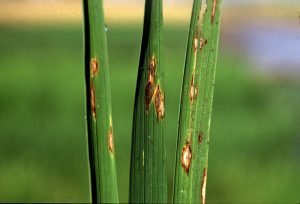
Magnaporthe grisea
Target Application: Leaf Wilt Disease in Bananas
Trana Discovery uses a platform that identifies a unique tRNA, or transfer RNA, required to build new proteins essential for a fungus to multiply and spread. We can develop a screen that discovers inhibitors of this tRNA. By inhibiting essential tRNA, critical new proteins are not built and the fungi die. Trana technology allows us to target a unique section of that tRNA, the anticodon stem loop (ASL) and stop at the fungi growing while not harming the plant or other living cells.
Today, over 400 million people in the developing world rely on the banana for one third of their daily caloric intake. The old “leaf wilt disease” fungus is back and this time it is resistant to every available fungicide. In the 1920’s through the 1950’s the world banana crop was almost entirely eliminated by this fungus. We avoided the destruction of all bananas by planting a resistant variety of bananas. However, Mother Nature built a new fungus of the same species but this time it is a slightly different variety TR4 and it is multi-resistant to traditional fungicides.
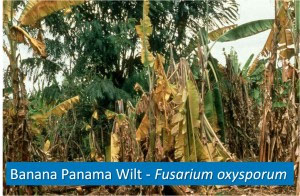
Seeking Funding
Trana is seeking funding to develop a platform targeted to the new resistant fungus that is killing the banana crops around the world. Trana will develop a platform in less than 12 months that will bring about a discovery of a new fungicide at the end of that time. That lead discovery can then be licensed into an entire new class of fungicides capable of eliminating this fungal disease from the world’s farms.
Proven Technology
Trana Discovery has proved its technology by producing two discovery platforms for HIV and Staphylococcus aureus for the pharmaceutical industry. Our intellectual property is highly protected and we have an excellent management team with more than 400 years of industry and academic experience. We also have a proven track record working with NIH and various government agencies.
Exclusive Licensing Opportunities
Trana is currently pursuing collaboration and licensing agreements with agriculture companies, academic institutions and other organizations for its assays, lead chemistries, target pathogens, and indications in the areas of fungal disease control. For more information, contact us at info@tranadiscovery.com.
Coffee Rust
One of the world’s largest coffee producers in 1869, was Ceylon (current Sri Lanka) exporting over 100 million pounds per year. This peak production year came to an abrupt halt with the appearance of a fungus new to the island, Hemileia vastatrix. This was the first major outbreak of a disease known today as coffee rust. Peak production of coffee occurred in 1870 when Ceylon exported 118 million pounds of coffee. But by 1886, coffee exports were down 80 percent, and by 1890, just 20 years since first reported, 90 percent of the area under coffee cultivation had been abandoned. The crop virtually disappeared from the island. A mycologist, Harry Ward from London’s Royal Botanic Gardens, confirmed that the parasitic fungus H. vastatrix was the cause of this rust.
Of current concern, especially in the last decade, are waves of coffee rust outbreaks devastating Latin America. Key to world production, Latin and South America produce close to 90% of the world’s Arabica coffee beans. Since 2012, some farms have seen a 50 to 80 percent loss of production. Resistant varieties have been explored but seem only a temporary solution. World Coffee Research (WCR) Scientific Director, Dr Christophe Montagnon, explained at a conference in September 2018 that fighting these fungi through genetic plant resistance is insufficient to combat coffee rust. Dr Montagnon stated, “The research community shall proceed to develop new varieties with new sources of resistance but also build up comprehensive rust-control strategies that go beyond genetics alone.” More here.
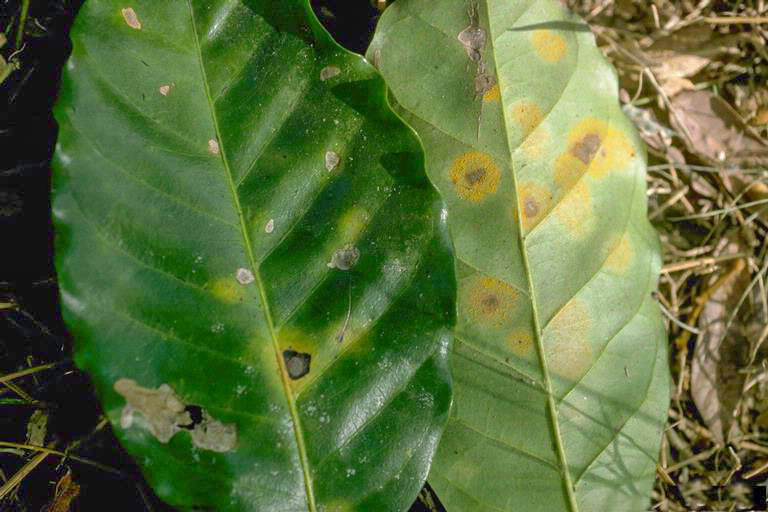
Trana Discovery has a unique discovery platform that unlocks a key target for antifungal solutions. Examining the fungal genome using bioinformatics and a proprietary database, Trana Discovery can identify an essential transfer RNA (tRNA) unique to H. vastatrix creating a selective target for pesticide control. Using a high throughput screening assay, Trana can screen thousands of chemistries identifying inhibitors of this tRNA. The resulting compounds will have a lethal effect on H. vastatrix. Selectively attacking rust in this manner should not disrupt the normal microbiome of the plant, surrounding soil, farmers or insects.




